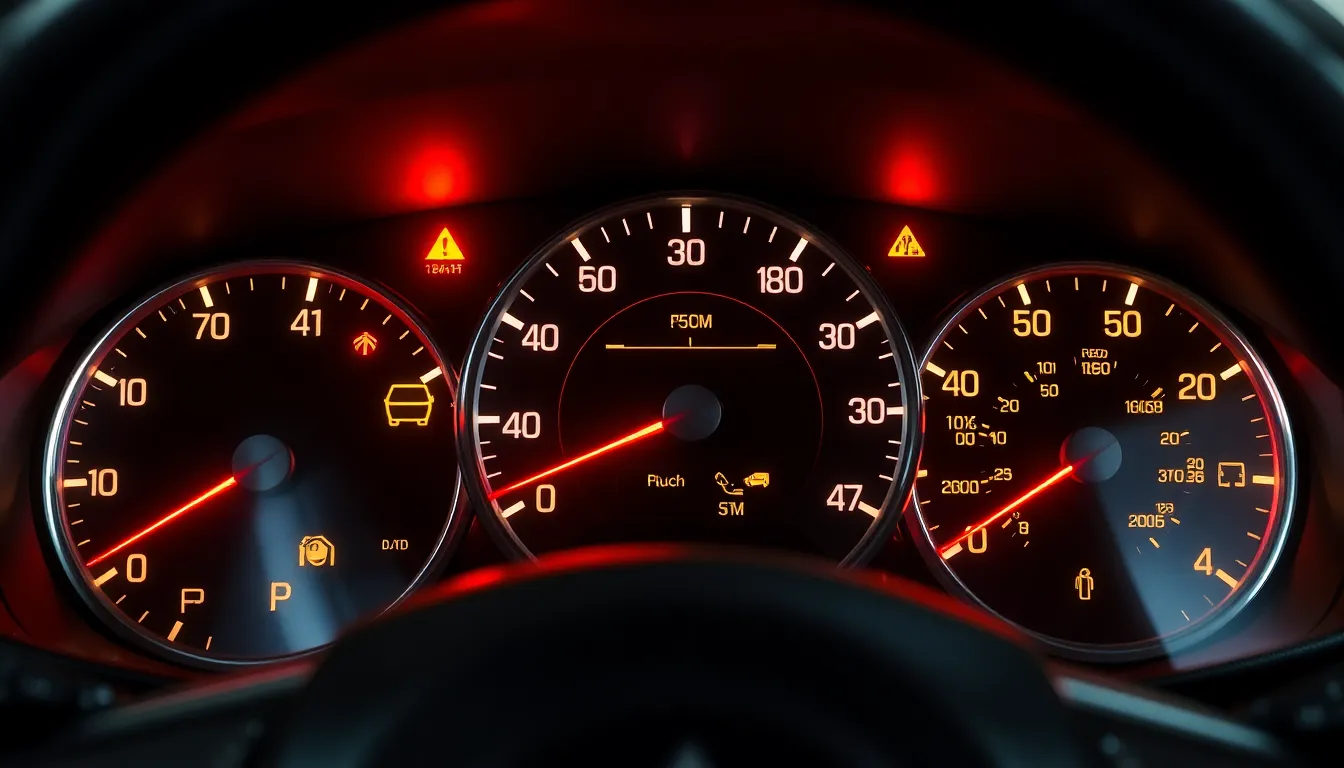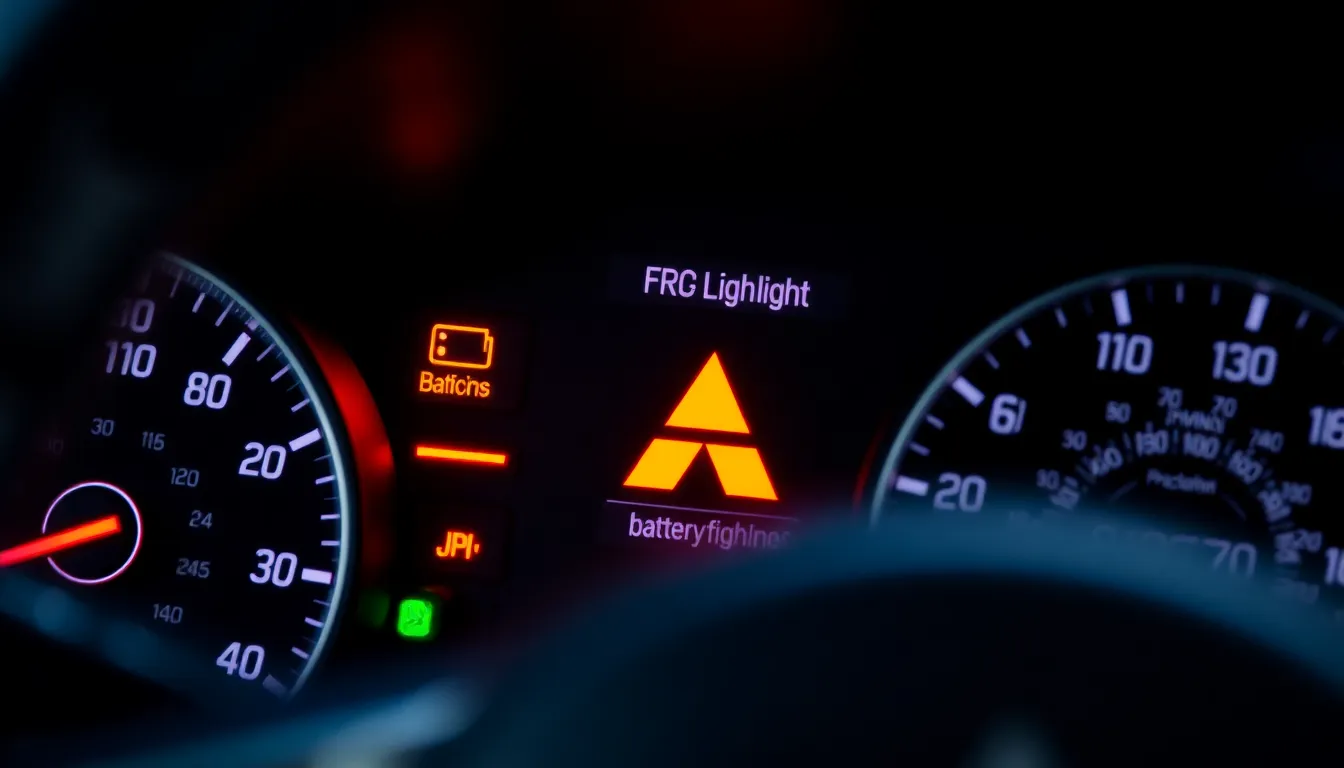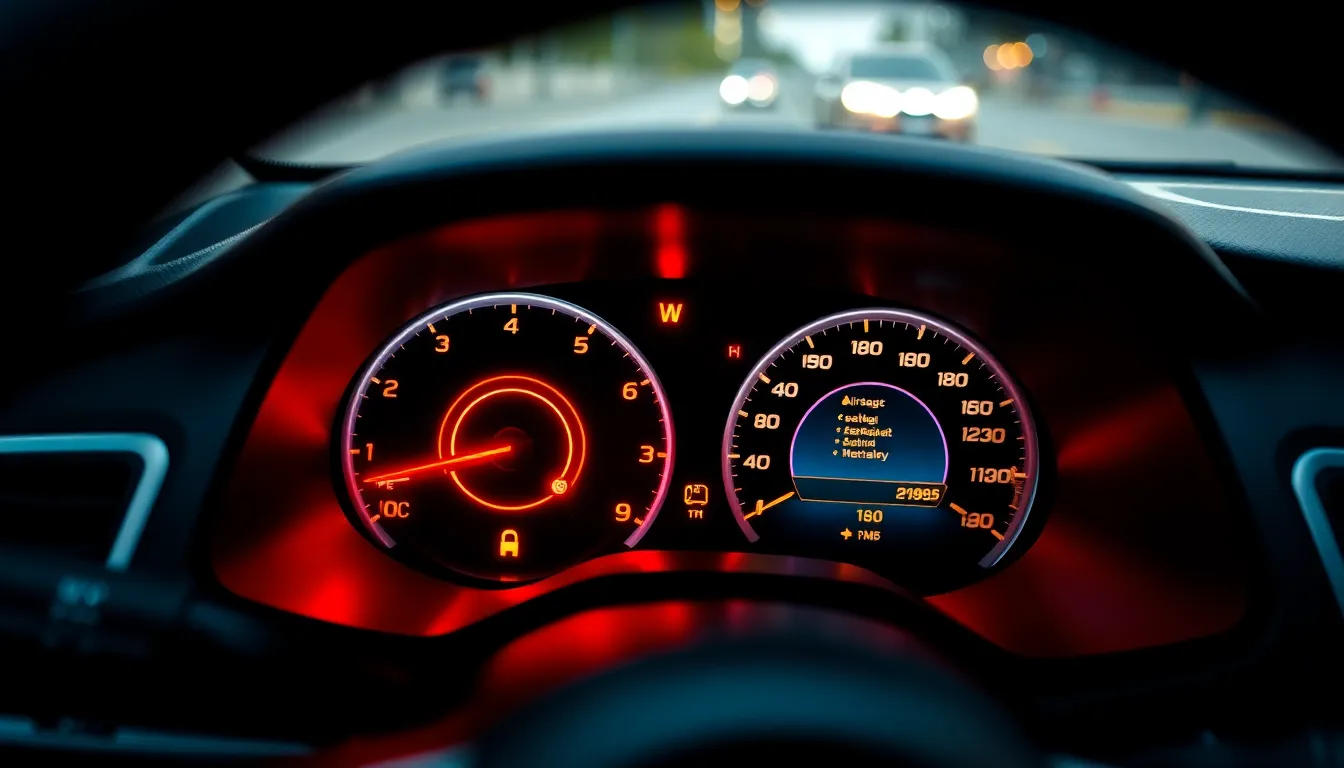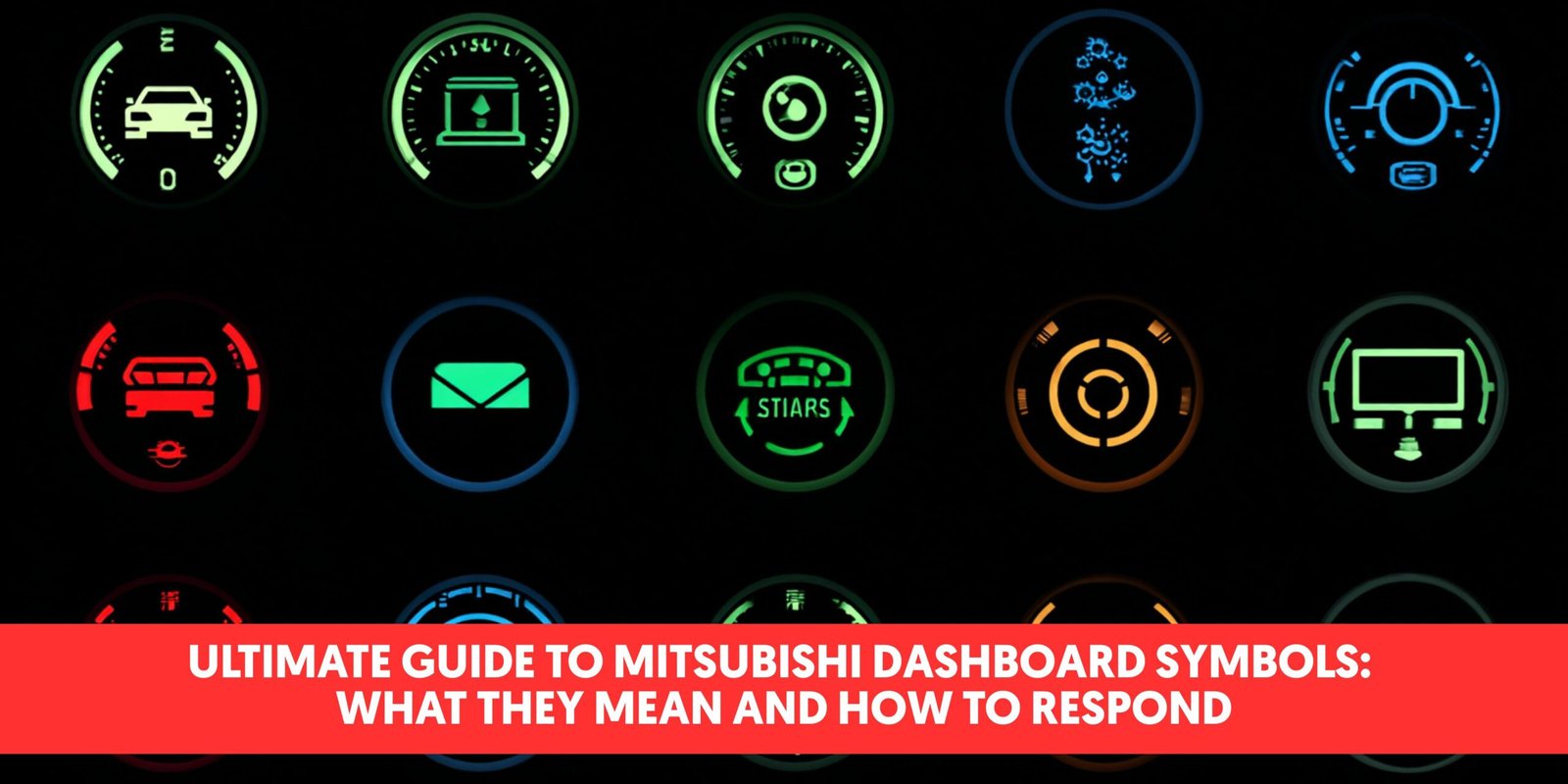Ever noticed those mysterious Mitsubishi dashboard symbols lighting up and wondered what they’re trying to tell you? Understanding these indicators isn’t just about satisfying curiosity—it’s about keeping your vehicle running safely and efficiently.
I’ve put together this comprehensive guide to help you decode those sometimes confusing Mitsubishi dashboard lights. From the urgent red warning symbols that demand immediate attention to the informational blue and green indicators that keep you in the loop about your vehicle’s systems, knowing what each symbol means can save you time, money, and potential headaches down the road.
Understanding Mitsubishi Dashboard Symbols
Mitsubishi dashboard symbols communicate vital information about your vehicle’s status and performance. These symbols appear on your instrument panel to alert you to potential issues or provide updates on various vehicle systems. Each symbol uses exact colors and shapes to indicate the urgency and type of information being conveyed.
Red warning lights demand immediate attention, typically signaling serious problems that could compromise safety or cause mechanical damage. Yellow or amber indicators suggest less urgent issues that still require addressing soon. Green and blue symbols generally provide information about active systems rather than warnings.
I’ve noticed that many Mitsubishi owners feel overwhelmed when unfamiliar symbols illuminate their dashboard. During my research, one Outlander owner told me how a simple oil pressure warning saved him from costly engine repairs because he recognized the symbol and took immediate action.
Dashboard symbols in Mitsubishi vehicles are grouped into several categories:
- Safety system indicators – airbags, seat belts, and driver assistance features
- Engine and mechanical warnings – oil pressure, temperature, and engine malfunction alerts
- Electrical system notifications – battery charge and electrical failures
- Operational status symbols – cruise control, headlights, and turn signals
Learning these Mitsubishi dashboard symbols isn’t just about troubleshooting—it’s about developing a deeper connection with your vehicle. Many drivers report feeling more confident and in control once they understand what each symbol means and how to respond appropriately.
Essential Warning Lights on Your Mitsubishi Dashboard

Mitsubishi dashboard symbols use a color-coded system to communicate the severity of issues in your vehicle. These illuminated indicators serve as your car’s way of telling you exactly what’s happening under the hood.
Red Warning Lights – Immediate Attention Required
Red warning lights on your Mitsubishi dashboard demand immediate attention as they indicate serious problems that could compromise safety or cause mechanical damage. The brake warning light, displayed as a red exclamation mark within a circle, alerts you to potentially dangerous braking system issues like low brake fluid or worn brake pads. I’ve seen many Mitsubishi owners pull over immediately when this light appears – it’s not one to ignore.
The battery charge warning light (red battery symbol) signals problems with your vehicle’s charging system. This could point to a failing alternator, faulty battery, or damaged electrical connections. My Lancer showed this light once, and I discovered a corroded battery terminal that was easily fixed before it left me stranded.
Another critical indicator is the oil pressure warning light, which appears as a red oil can icon. This light illuminates when your engine’s oil pressure drops dangerously low, potentially due to insufficient oil levels or pump failures. Continuing to drive with this light on risks catastrophic engine damage that could cost thousands to repair.
Yellow/Amber Warning Lights – Caution Needed
Yellow or amber warning lights on your Mitsubishi dashboard indicate issues that need attention soon but aren’t immediate emergencies. The engine warning light, displayed as a yellow engine icon, signals problems within the engine management system. These issues might include sensor failures, fuel delivery problems, or exhaust system malfunctions that affect performance and emissions.
The check engine light is perhaps the most common yellow indicator Mitsubishi owners encounter. This versatile warning can illuminate for various reasons ranging from a loose gas cap to more serious problems with oxygen sensors or catalytic converters. Many drivers I’ve spoken with mention feeling anxious when this light appears, but a diagnostic scan often reveals simple fixes.
Mitsubishi vehicles also display yellow indicators for tire pressure monitoring systems, anti-lock brake systems, and traction control warnings. These safety-related alerts don’t necessarily require immediate stops but should be addressed promptly to maintain optimal vehicle performance and safety. The exact meaning of each symbol can be found in your Mitsubishi owner’s manual, which I always recommend keeping handy for quick reference when unfamiliar dashboard symbols appear.
Critical Engine and Performance Indicators

Mitsubishi dashboard symbols related to engine and performance provide crucial information about your vehicle’s mechanical health. These indicators alert you to potential issues that could affect your car’s operation and longevity, helping you avoid costly repairs when addressed promptly.
Engine Management System Symbols
The Check Engine Light (CEL) is perhaps the most recognized dashboard symbol in Mitsubishi vehicles. This amber-colored warning typically appears as an engine outline and signals problems with the engine or emission control system. Common triggers include oxygen sensor failures, catalytic converter issues, or something as simple as a loose gas cap. I’ve seen many Outlander owners panic when this light appears, but it doesn’t always indicate a severe problem – though it should never be ignored.
The Oil Pressure Warning light displays as an oil can icon and glows red, indicating dangerously low oil pressure that could cause immediate engine damage. This isn’t a maintenance reminder but a critical alert that requires stopping your vehicle as soon as safely possible. One Mitsubishi Lancer owner told me they saved their engine by pulling over immediately when this light appeared – a quick oil top-off prevented what could have been a $3,000 repair.
Battery Warning indicators appear as a battery symbol and signal charging system problems. These might include alternator failure, corroded battery terminals, or a dying battery. This red warning deserves immediate attention, as driving with a failing charging system can leave you stranded unexpectedly.
Temperature and Pressure Warning Lights
The Engine Temperature Light in Mitsubishi models appears either blue (when the engine is cold) or red (when overheating). The red warning requires immediate action – pulling over safely and shutting off the engine to prevent serious damage. A Mitsubishi Eclipse owner once shared how monitoring this indicator during a mountain drive helped them avoid engine failure during extreme conditions.
Brake System Warning indicators illuminate as a red exclamation mark in a circle or the word “BRAKE.” This critical symbol may indicate low brake fluid, worn brake pads, or a more serious brake system malfunction. Safety depends on properly functioning brakes, making this symbol one you should never drive with.
The Tire Pressure Monitoring System (TPMS) warning appears as a yellow or orange tire cross-section with an exclamation point. This alerts you when one or more tires fall below recommended pressure levels. Properly inflated tires improve handling, fuel economy, and tire longevity. Many Mitsubishi Outlander Sport drivers appreciate this feature during seasonal temperature changes when tire pressure naturally fluctuates.
Safety System Indicators on Mitsubishi Vehicles

Safety system indicators on Mitsubishi dashboards alert drivers to potential issues with critical safety features. These indicators use exact colors and symbols to communicate the urgency and nature of safety concerns, helping drivers address problems before they become dangerous.
Airbag and Seatbelt Indicators
Mitsubishi vehicles display distinctive airbag and seatbelt indicators to ensure passenger safety. The airbag warning light, shown as a seated figure with a deployed airbag, illuminates in red when there’s a fault in the airbag system. This critical indicator suggests airbags might not deploy correctly during an accident, creating a important safety risk that requires immediate professional inspection. Many Mitsubishi owners I’ve spoken with admit they initially ignored this light, not realizing its importance until a service technician explained the potentially life-threatening consequences.
The seatbelt indicator features a person buckling up, glowing red when occupants haven’t secured their seatbelts. This persistent reminder stays illuminated until all detected passengers have properly fastened their restraints. Most modern Mitsubishi models also include an audible chime that increases in volume and frequency the longer seatbelts remain unfastened, making it virtually impossible to overlook this essential safety measure.
Brake System Warning Lights
Brake system warning lights represent some of the most crucial Mitsubishi dashboard symbols for driver safety. The primary brake system warning light appears as an exclamation mark inside a circle with curved lines on either side, glowing bright red to signal brake fluid issues, worn brake pads, or other braking system malfunctions. Given that brakes are fundamental to vehicle safety, this warning demands immediate attention—driving with compromised brakes significantly increases accident risk.
The ABS (Anti-lock Braking System) warning light, typically displayed as “ABS” or a circle containing an exclamation mark, illuminates in yellow or red when this system experiences problems. Though conventional braking remains functional when this light appears, the vehicle loses the enhanced stability and control that ABS provides during emergency stops or on slippery surfaces. I’ve encountered many Mitsubishi drivers who didn’t realize their ABS wasn’t functioning until they needed it during a sudden stop in rainy conditions.
Mitsubishi vehicles also feature a traction control warning, depicted as a car with skid marks, indicating issues with the system that maintains grip during acceleration. This technology proves particularly valuable in adverse weather, helping prevent wheel spin and maintaining directional control. Addressing this warning promptly helps preserve vehicle stability and handling, especially on wet or icy roads where traction becomes critically important.
Driver Assistance and Comfort Feature Symbols
Mitsubishi vehicles come equipped with various dashboard symbols that indicate the status of driver assistance and comfort features. These indicators help drivers understand which systems are active and functioning properly while driving.
Cruise Control and Adaptive Driving Indicators
Cruise Control indicators in Mitsubishi vehicles appear when you’ve activated the speed maintenance system. The standard Cruise Control symbol typically looks like a speedometer with an arrow and illuminates when the system is engaged, allowing you to maintain a constant speed without pressing the accelerator. Adaptive Cruise Control (ACC) symbols feature a car with distance marks or lines, indicating the system is actively maintaining both speed and distance from vehicles ahead. Many newer Mitsubishi models like the Outlander and Eclipse Cross display these symbols prominently when the systems are activated, making it easy to confirm they’re working properly.
Climate and Lighting System Symbols
Climate control symbols in Mitsubishi dashboards indicate the current settings of your heating, ventilation, and air conditioning systems. Common indicators include fan speed symbols (usually fan blades), temperature indicators (shown as thermometer icons), and air distribution symbols (arrows pointing to different areas of the cabin). Lighting system indicators are equally important for safe driving. The high beam indicator, represented by a blue headlight symbol with lines projecting forward, illuminates when your high beams are active. Fog light indicators display when front or rear fog lights are on, typically shown as a lamp symbol with wavy lines representing fog. These lighting indicators help prevent accidentally leaving high beams on when approaching other vehicles or forgetting to turn off fog lights in clear conditions.
What to Do When Dashboard Symbols Illuminate
Mitsubishi dashboard symbols provide vital information about your vehicle’s condition, requiring different responses based on their color and urgency. Taking appropriate action when these lights appear can prevent costly repairs and ensure your safety on the road.
Responding to Red Warning Lights
Red warning lights on your Mitsubishi dashboard demand immediate attention as they indicate serious issues that could compromise safety or cause mechanical damage. When a red light illuminates, I recommend safely pulling over as soon as possible and turning off your engine. The brake system light requires checking your brake fluid levels and brake system integrity before continuing your journey. For an oil pressure warning light, stop immediately and check your oil level—continuing to drive could result in catastrophic engine damage that costs thousands to repair. Battery warning lights in red indicate severe charging system problems that might leave you stranded if ignored. I’ve spoken with many Mitsubishi owners who avoided major mechanical failures simply by responding promptly to these critical red warnings.
Addressing Yellow/Orange Indicators
Yellow or orange lights on your Mitsubishi dashboard signal issues requiring attention soon but aren’t immediate emergencies. The check engine light typically indicates emission system problems or minor engine issues that should be diagnosed within a few days of appearing. A yellow tire pressure monitoring system (TPMS) light means at least one tire needs inflation to the recommended pressure—addressing this promptly improves fuel efficiency and prevents uneven tire wear. ABS warning lights in yellow suggest the anti-lock braking system requires service, though your standard brakes still function. One Outlander owner told me they noticed improved handling and fuel economy after addressing a yellow warning that had been on for weeks. Schedule a service appointment within a reasonable timeframe when these lights appear to prevent more serious problems from developing.
Understanding Green/Blue System Indicators
Green and blue indicators on your Mitsubishi dashboard simply inform you that certain systems are active and functioning as intended. The turn signal indicators flash green when activated, confirming your signals are working properly. High beam indicators illuminate in blue when your high beams are engaged, reminding you to dim them for oncoming traffic. ECO mode indicators typically appear in green, showing that your vehicle is operating in its fuel-efficient driving mode. These normal operation lights require no action beyond awareness of which systems are currently active. Many Mitsubishi drivers appreciate these visual confirmations that everything is working correctly, especially when using systems like cruise control or fog lights in challenging conditions.
When to Contact Your Mitsubishi Dealer
Contact your Mitsubishi dealer promptly when red warning lights persist after basic checks or if you’re uncertain about any dashboard symbol’s meaning. Scheduling service is essential for persistent check engine lights that don’t resolve after tightening your gas cap or checking fluid levels. ABS, airbag, or brake system warnings require professional diagnosis with specialized equipment that most home mechanics don’t possess. Service reminder lights indicate maintenance intervals established by Mitsubishi engineers to keep your vehicle performing optimally. The dealer’s factory-trained technicians have access to model-exact diagnostic tools and genuine Mitsubishi parts. I recently spoke with a Lancer owner who ignored an intermittent warning light for months, resulting in a repair bill three times higher than what early intervention would have cost. Your owner’s manual contains a complete guide to all Mitsubishi dashboard symbols exact to your model, making it an invaluable reference when unusual indicators appear.
Conclusion
Understanding your Mitsubishi’s dashboard symbols is essential for both safety and vehicle longevity. By familiarizing yourself with these color-coded indicators you’ll know exactly when immediate action is needed and when service can wait.
I’ve found that Mitsubishi owners who recognize these symbols save significantly on repair costs and avoid roadside emergencies. Your dashboard is communicating valuable information – all you need is the knowledge to interpret it.
Keep your owner’s manual accessible and don’t hesitate to contact a Mitsubishi dealer when uncertain about any warning lights. This proactive approach will help maintain your vehicle’s performance and provide peace of mind every time you get behind the wheel.
Frequently Asked Questions
What do the different colors of dashboard symbols mean in Mitsubishi vehicles?
Dashboard symbols use color coding to indicate urgency. Red lights signal serious issues requiring immediate attention. Yellow or amber indicators suggest less urgent problems that need addressing soon. Green and blue symbols simply provide operational information about functioning systems like headlights or cruise control.
What should I do if a red warning light appears on my Mitsubishi dashboard?
Pull over safely as soon as possible and turn off the engine. Red warning lights indicate serious problems that could compromise safety or cause mechanical damage. Check your owner’s manual for specific guidance, and contact roadside assistance or a Mitsubishi dealer immediately. Continuing to drive could result in significant damage.
What does the Check Engine Light (CEL) mean in a Mitsubishi?
The Check Engine Light indicates potential engine or emission control issues. While alarming, it doesn’t always signal severe problems. It could be something minor like a loose gas cap or more serious like engine misfires. If the light is steady (not flashing), you can usually continue driving but should have the vehicle checked soon.
How serious is the Oil Pressure Warning light?
Very serious. This red warning light indicates dangerously low oil pressure, which can cause catastrophic engine damage within minutes. If it illuminates while driving, pull over immediately, shut off the engine, and check the oil level. Even if the level appears normal, don’t restart the vehicle—have it towed to a service center.
What does the Battery Warning light indicate?
The Battery Warning light (typically showing a battery symbol) indicates issues with your vehicle’s charging system. When illuminated, your battery isn’t being charged properly due to problems with the alternator, battery, or related electrical connections. You may be able to drive briefly on battery power alone, but seek service quickly.
What are the brake system warning lights I should know about?
Mitsubishi vehicles have two primary brake warning lights: the main Brake System Warning (red) indicates issues with the hydraulic braking system or parking brake engagement, while the ABS Warning Light (usually yellow) signals problems with the anti-lock braking system. Both require attention, but the red warning is more urgent.
What do the cruise control symbols indicate?
The standard Cruise Control symbol (speedometer with an arrow) shows the system is active and maintaining speed. The Adaptive Cruise Control symbol (car with distance marks) indicates the system is maintaining both speed and distance from vehicles ahead. Different colors or flashing patterns may indicate system status or malfunction.
When should I contact a Mitsubishi dealer about dashboard symbols?
Contact your dealer if warning lights persist after addressing the apparent cause, multiple warning lights appear simultaneously, a red warning light appears, or any warning light reappears after being serviced. Also reach out if you’re uncertain about the meaning of any symbol or if a warning light affects vehicle driveability.
Related Posts:
